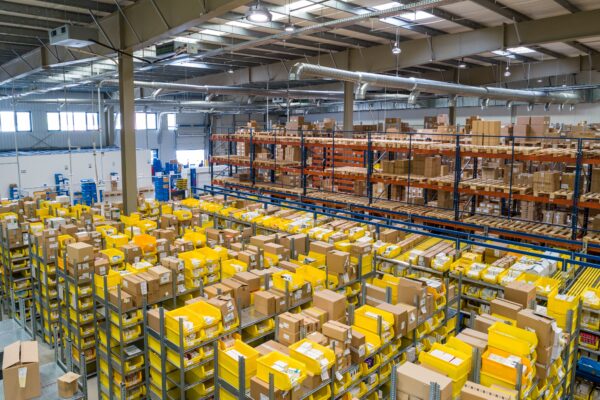So, you’ve made the decision that you are ready to dive into the exciting world of selling on the world’s largest online marketplace? But, perhaps you don’t want to invest the cash upfront and purchase an entire inventory of products. Well, luckily you’ve come to the right place! In this article, we’re going to unveil the secrets to mastering the art of starting a small business by selling on Amazon and unleashing the power of inventory-free success.

Selling on Amazon has become a game-changer for countless entrepreneurs, allowing them to reach millions of potential customers worldwide. But let’s face it, navigating this vast platform can be a daunting task, especially for newcomers. That’s where our expertise comes in!
With years of experience and countless success stories under our belts, we’ve learned the ins and outs of selling on Amazon like nobody else. We’ve cracked the code to achieving inventory-free success, and we’re here to share our knowledge with you.
From finding the perfect product to optimizing your listings, we’ve got you covered. We’ll guide you through the common pitfalls and help you to maximize your profits.
So, whether you’re a seasoned seller looking to take your business to new heights or a newbie eager to make your mark, get ready to unlock the full potential of selling on Amazon. Let’s embark on this exciting journey together and unleash the power of inventory-free success!
Is it even possible to sell on Amazon without inventory?
Fundmentally, there’s no real way to sell on Amazon without any inventory at all as your product is going to have to come from somewhere. The only way you can really sell on Amazon without inventory is if you sell Kindle e-books. Other than that, someone is going to have to hold some stock for you, or you’re going to have to hold it yourself to be able to sell on Amazon.
However, you don’t necessarily need to have an entire warehouse full of stock in order to sell on Amazon. Here are a few ways where you can still sell on Amazon while minimizing the inventory you hold.
Dropshipping
This is probably the most obvious method, and it’s where effectively someone else holds your inventory for you. With dropshipping, you list your item for sale, and when you receive an order, you place an order with your supplier and they ship the item to your customer. Your customer is (in an ideal world) none the wiser that you didn’t actually hold the item in stock before they ordered it.
There are inherent risks with this. Your dropshipping supplier won’t just be providing service to you – they’ll be providing it to lots of other people, and just because your customer is annoyed at you because they haven’t received their product yet doesn’t mean the dropshipper will care. Additionally, you might find that you go to order an item and it’s out of stock – leaving you to have an embarrassing conversation with your customer and having to process a refund.
Online Arbitrage
Now, with online arbitrage, you will have to hold inventory. It certainly won’t be pallets and pallets of inventory, but if you can find a profitable product, you should buy as many of them as you can to ensure you make as much money as possible. Online arbitrage involves buying products from retailers at a low price and selling them on Amazon or eBay at a higher price. For example, you see a stepladder on sale for $20 at Lowe’s, and the same stepladder is selling on Amazon for $70. Buy the ladder, advertise it on Amazon, ship it to your customer and you’ve just made $50 less fees
The downside of this is that you need to either be able to organise shipping yourself, or you can do what most people do and ship their items to Amazon FBA, where Amazon handle all of the shipping and customer service for you. Be aware that if your items don’t sell, Amazon will charge you a storage fee to keep your items in their fulfilment center, and you also need to make sure your items are packaged correctly before they get to Amazon or they might be rejected. There are services that will help you do this.
Merch on Demand
Merch on Demand is where you upload some artwork to Amazon, and they will print that artwork onto a t-shirt or another item of clothing and will pay you a royalty for every item sold. This can be a good way of getting into the custom apparel market without having to invest in any equipment. You suggest the list price, Amazon prints what the customer buys, ships it to them and then they pay you a royalty at the end of the month.
While this is convenient and easy, it isn’t as profitable as doing this yourself, as Amazon will take most of the money and pay you a small percentage of the sale price to use your artwork. The royalty paid varies depending on where the items were sold, so make sure you ensure you know exactly what you’re getting.
What are the benefits and risks of selling on Amazon without inventory?
Selling on Amazon without inventory can be enticing for entrepreneurs, especially those that are just starting out and may not have a lot of money to invest. But it’s important to remember that doing this also comes with its own range of risks and benefits. You need to consider these carefully if you want to make a success from your Amazon business. Here we run through some of the main things you should consider before making your choice.
Advantages of selling products on Amazon with no inventory
Lower upfront costs
One of the biggest benefits of selling on Amazon without inventory is the reduced upfront costs. With traditional retail models, you would need to invest in purchasing and storing inventory. However, with inventory-free methods like dropshipping or print-on-demand, you only pay for the products when a customer places an order. This eliminates the need for large upfront investments and reduces the risk of holding unsold inventory.
Reduced storage and logistics concerns
By utilizing inventory-free methods, you eliminate the need for storage space and the associated costs. With dropshipping, the supplier handles the storage, packaging, and shipping of products. This allows you to focus on other aspects of your business, such as marketing and customer service, without the hassle of managing inventory logistics.
Wide product selection
Selling on Amazon without inventory allows you to start an online store without the need for physical storage, but still offer a wide range of products. With print-on-demand or dropshipping, you can easily expand your product catalog and cater to different customer preferences. This flexibility can help you attract a larger customer base and increase your sales potential.
Despite the benefits, there are also some risks associated with selling on Amazon without inventory. It’s important to consider these factors before diving into an inventory-free selling strategy.
Risks of selling products on Amazon with no inventory
Limited control over product quality and fulfillment
When you rely on third party logistics or manufacturers to handle inventory and shipping, you have limited control over product quality and fulfillment. If the supplier fails to meet customer expectations or experiences delays in shipping, it can reflect poorly on your business. It’s crucial to choose reliable and reputable partners to mitigate these risks.
Higher competition
Inventory-free selling methods, such as dropshipping, have lower barriers to entry, which means there can be higher competition in certain product categories. It’s important to conduct thorough market research and find unique selling propositions to differentiate yourself from competitors. Building a strong brand and providing exceptional customer service can help you stand out in a crowded marketplace.
Profit margins may be lower
While inventory-free selling methods can reduce upfront costs, they may also result in lower profit margins. Suppliers or manufacturers typically charge a higher price per unit when compared to purchasing in bulk. Additionally, fees associated with dropshipping can eat into your profits.
Your account could be suspended
One of the biggest risks of selling on Amazon without an inventory is that you run the risk of having your seller’s account suspended or closed. If you repeatedly fail to fulfill orders, due to supplier issues or poor customer service, you may find that Amazon decides to suspend your account. If this happens, it can be difficult to get it reinstated. If these issues become persistent there is even a chance that Amazon could permanently delete your sellers account, which will put a permanent end to your Amazon business.
What are the alternatives to selling on Amazon without an inventory?
While starting an Amazon business without inventory can be a lucrative option for many entrepreneurs, it may not be the right fit for everyone. If you’re looking for alternatives to inventory-free selling on Amazon, here are a few options to consider:
Private Labeling
Creating a Private Label involves inventing your own brand and sourcing products from manufacturers or suppliers. With private labeling, you have more control over product quality and branding. You can customize the product packaging and differentiate yourself from competitors. While private labeling does require upfront investment in inventory, it can lead to higher profit margins and long-term success.
Retail Arbitrage
Retail arbitrage involves sourcing products from retail stores or online marketplaces at a lower price and reselling them on Amazon at a higher price. This method requires careful research and scouting for profitable deals. While retail arbitrage does involve managing inventory, it can be a viable option for those who enjoy the thrill of finding profitable products in physical stores or online marketplaces.
Wholesale Bundling
Wholesale bundling involves creating unique product bundles by combining complementary items sourced from wholesalers or manufacturers. By bundling products together, you can offer customers a unique value proposition and stand out from competitors. This method requires upfront investment in inventory, but it can lead to higher profit margins and increased customer satisfaction.
Handmade and Artisan Products
If you have a talent for crafting handmade or artisan products, platforms like Etsy may be a better fit for you. Etsy specializes in handmade, vintage, and unique products, and it attracts a specific customer base looking for one-of-a-kind items. While selling on Etsy does involve managing inventory, it provides a platform tailored to creative entrepreneurs.
E-commerce Platforms
In addition to Amazon, there are several other e-commerce platforms where you can sell products without the need for inventory. Platforms like Shopify, eBay, and Walmart Marketplace offer opportunities to reach a wide customer base and manage your own inventory. These platforms provide more control over branding and customer experience, but they also require additional marketing efforts to drive traffic to your store.
It’s important to carefully evaluate your business goals, resources, and preferences when considering alternatives to selling on Amazon without inventory. Each option has its own advantages and challenges, so choose the one that aligns with your long-term vision and capabilities.
Now, if this sounds like more trouble than it’s worth, there is an alternative. Some people buy products from retailers cheaply and sell them on Amazon to make money as a side hustle. SourceMogul looks at over 20 million retail products every month to find these hidden gems. We offer a 7-day free trial to see if it works for you, which you can check out below.
Wrapping up
In conclusion, selling on Amazon without a physical inventory can be a game-changer for entrepreneurs looking to reach a wide customer base and minimize upfront costs. Methods such as dropshipping, merch-on-demand and selling digital products offer opportunities for inventory-free success. These methods allow sellers to focus on marketing, customer service, and product development while eliminating the need for inventory management.
The benefits of selling on Amazon without inventory include lower upfront costs, reduced storage and logistics concerns, and a wide product selection. Entrepreneurs can save money by only paying for products when a customer places an order, and they can offer a diverse range of products without the need for physical storage.
However, there are also risks to consider. Sellers have limited control over product quality and fulfillment when relying on suppliers or manufacturers. There may also be higher competition in certain product categories, and profit margins may be lower due to higher unit prices and fees associated with inventory-free methods.
For those seeking alternatives to selling on Amazon without inventory, options like private labeling, retail arbitrage, wholesale bundling, selling on platforms like Etsy, and utilizing other e-commerce platforms like Shopify, eBay, and Walmart Marketplace are worth exploring. Each alternative has its own advantages and challenges, so it’s important to carefully evaluate business goals, resources, and preferences before making a decision.
In the end, whether you choose to sell on Amazon without inventory or explore alternative methods, the key is to find a strategy that aligns with your long-term vision and capabilities. With the right approach and dedication, you can unlock the full potential of selling on Amazon and achieve inventory-free success.
More strategy
-

6 steps to becoming an Amazon seller. No experience needed.
Becoming a successful Amazon seller is easy - the Amazon brand and logo represents…
-

Top tips for success from a new Amazon seller
We've compiled a list of the top tips for new sellers, gathered from a…
-

How to get ungated on Amazon – your guide to Amazon restricted categories
If you’re looking to expand your online arbitrage business, you might find yourself tempted…
-

How to prepare for Amazon Q4 trading
Every year the holiday season seems to come around a little earlier. As an…




